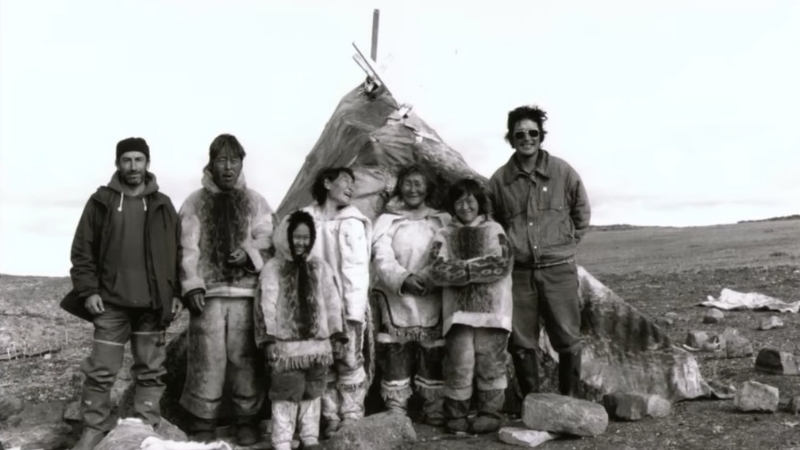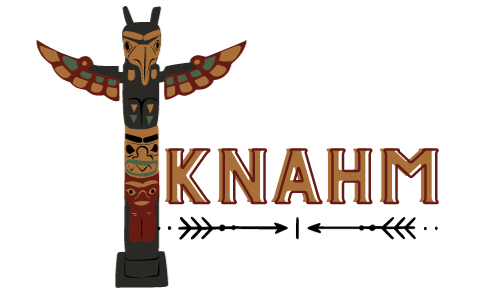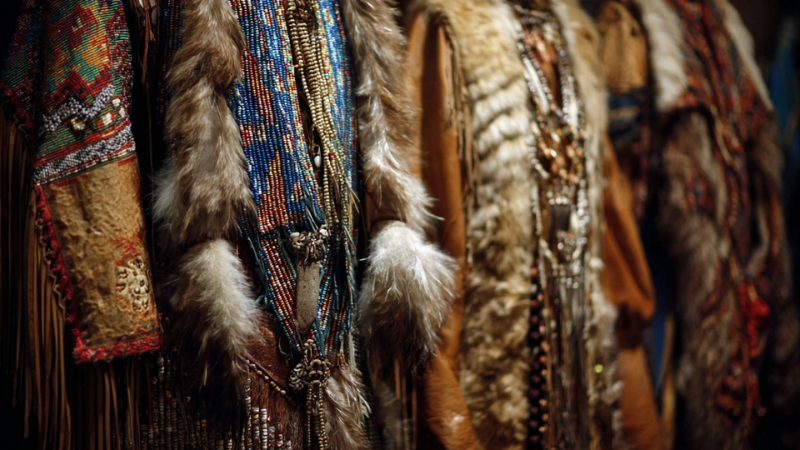Traditional Native American clothing was never just fabric stitched together for survival. It carried meaning, identity, artistry, and connection to the natural world.
Every stitch, bead, feather, and color choice reflected a tribe’s relationship with the environment, spiritual beliefs, and social order. Clothing served not only as protection from the weather but also as a living statement of heritage, tribe, role, and respect for life.
Each region of North America produced its own materials and techniques. Plains tribes relied on buffalo hides; Woodland tribes used deer skin and bark fiber; Southwestern peoples wove cotton and yucca; Arctic peoples crafted sealskin and caribou fur.
Though vastly different in form and climate, one truth connected them all – clothing was sacred, made with intention, and often part of ceremony.
Materials and Construction
Native clothing reflected a deep understanding of natural resources. Nothing was wasted. Materials were gathered, prepared, and transformed using processes that combined practicality with ritual respect.
Material
Source
Use in Clothing
Notes on Meaning or Technique
Deerskin
White-tailed deer, elk
Tunics, leggings, moccasins
Soft, durable, used by Eastern Woodland and Plains tribes
Buffalo Hide
American bison
Robes, dresses, tipi covers
Central to Plains culture, tanned and painted for storytelling
Cotton & Yucca Fiber
Southwest (Pueblo, Hopi, Zuni)
Woven textiles, kilts, blankets
Early weaving traditions with geometric symbolism
Sealskin & Caribou Fur
Arctic (Inuit, Aleut)
Parkas, boots, mittens
Waterproof and insulated; designed for survival
Birch Bark & Plant Fiber
Northeastern forests
Hats, capes, belts
Lightweight protection in humid forest climates
Turkey & Eagle Feathers
Various tribes
Headdresses, dance regalia
Symbols of honor, bravery, and prayer
Shells & Beads
Coastal and trade routes
Jewelry, decoration
Used for currency, beauty, and clan identification
Tanning hides, softening leather, and dyeing fibers were all community practices. Women often held the role of hide workers and garment makers, with each piece made for a specific person and purpose.
Dyes came from roots, berries, clay, and minerals, each with color meanings rooted in spiritual cosmology.
Regional Styles Across the Continent
Clothing styles varied dramatically from the cold tundra to the arid Southwest. Geography dictated design, yet symbolic meaning united all.
Plains Tribes (Lakota, Cheyenne, Crow, Blackfoot)

Plains clothing emphasized mobility and connection to the buffalo. Men wore buckskin shirts, leggings, and breechcloths.
Women wore long deerskin or elk-hide dresses decorated with beadwork and porcupine quills. The feathered warbonnet, reserved for honored warriors, symbolized acts of bravery and service to the tribe.
Garment
Typical Material
Symbolism or Use
Buffalo Robe
Tanned buffalo hide
Used as a blanket or a ceremonial item
Beaded Dress
Deerskin
Represented tribal identity and womanhood
Warbonnet
Eagle feathers
Each feather represented a brave act
Moccasins
Soft leather
Designed for horseback and travel efficiency
Feathers and quills were sacred. The act of earning a feather involved courage or sacrifice. Each warbonnet told a story – an autobiography in materials.
Woodland Tribes (Iroquois, Wampanoag, Powhatan, Shawnee)
In the dense forests of the East, deer and moose hides were the foundation. Men wore breechcloths with leggings; women wore wrap-around skirts and mantles.
Winter clothing included fur-lined robes. Beadwork and dyed porcupine quills replaced painted designs, often arranged in floral or geometric patterns.
Birch bark was used for hats and accessories, and wampum – shell beads from the quahog clam – became both adornment and record-keeping tool. Wampum belts carried treaties, stories, and family lineage.
Material/Design
Function
Meaning
Wampum Belts
Beaded from shells
Used as records and ceremonial gifts
Quillwork
Decorative technique
Symbol of patience and precision
Deerskin Tunics
Everyday wear
Soft, flexible, suited for a humid climate
Southwest Tribes (Navajo, Hopi, Zuni, Apache)
View this post on Instagram
In the dry Southwest, weaving replaced tanning. The Pueblo peoples developed cotton weaving thousands of years before European contact.
Later, sheep introduced by the Spanish revolutionized Navajo textile production, leading to the world-famous Navajo blankets and rugs.
Women wore woven dresses (mantas), often tied over one shoulder. Men wore breechcloths with woven sashes. Jewelry of turquoise and silver became a hallmark of identity, symbolizing protection, prosperity, and balance.
Garment
Material
Symbolism
Manta Dress
Woven cotton or wool
Represents grace and harmony
Turquoise Necklace
Stone and silver
Stone of healing and spiritual balance
Sash Belt
Woven wool
Used in dance and ceremony
Moccasins
Deerskin
Decorated with woven bands or conchos
Patterns on blankets and clothing were more than aesthetic – they represented prayers, stories, and cosmic order. Diamonds, zigzags, and spirals often mirrored lightning, mountains, and life paths.
Northwest Coast Tribes (Tlingit, Haida, Kwakwaka’wakw)
These coastal cultures, surrounded by cedar forests and salmon-rich rivers, made clothing that was as symbolic as it was functional.
Cedar bark was softened and woven into capes, skirts, and cloaks, sometimes combined with mountain goat wool. Chilkat blankets – complex woven robes – displayed clan crests and animal totems.
Item
Material
Cultural Role
Chilkat Robe
Cedar fiber, goat wool
Worn by chiefs and dancers during ceremonies
Button Blanket
Wool trade cloth, shell buttons
Displayed family crests at potlatches
Cedar Bark Cape
Inner cedar bark
Ceremonial and weather protection
Each robe was like a living crest, combining artistry and status. The designs embodied clan identity, linking the wearer to ancestors, spirits, and stories.
Arctic Peoples (Inuit, Aleut, Yupik)

Far to the north, survival depended on mastery of insulation and waterproofing. Inuit seamstresses crafted parkas from caribou hide, lined with fur, and sealed with sinew thread.
Sealskin boots and mittens provided waterproof protection.
Garment
Material
Purpose
Parka
Caribou or sealskin
Insulation and spiritual protection
Kamiit (Boots)
Sealskin
Waterproof for ice travel
Mittens
Fur and hide
Essential for hunting
Amulets
Bone, ivory
Protection from the spirits of animals hunted
Each piece carried spiritual weight. The act of sewing was itself a ritual – each stitch made with gratitude to the animal whose life sustained the human one.
Gender, Ceremony, and Meaning
Clothing marked identity and life stage. Men’s garments often reflected achievements in hunting or war, while women’s attire expressed family, fertility, and artistry.
Children were dressed with protective symbols – beads or amulets to guard them from harm.
Colors and patterns also held deep spiritual meaning:
Color
Meaning
Red
Life, war, strength
Yellow
Sunlight, fertility
Black
Victory and protection
White
Purity, the spirit world
Blue/Green
Sky, water, renewal
Ceremonial attire – powwow regalia, Sun Dance dresses, or healing robes – was treated as sacred.
Feathers represented prayers carried upward; fringe symbolized flowing energy; jingles and shells created sound to summon spirits during dance.
Post-Contact Adaptations and Continuity

After European contact, trade goods such as glass beads, metal buttons, and wool fabric changed how clothing looked, but not what it meant. Tribes quickly adapted, integrating these new materials while keeping their symbolism intact.
The Iroquois adopted ribbonwork, Plains tribes used glass beadwork to replace quillwork, and Pueblo women incorporated calico prints into traditional garments.
Despite forced assimilation policies and boarding schools in the 19th and 20th centuries, Native artisans preserved their designs through secret sewing circles and community ceremonies. Today, powwow dancers, fashion designers, and artisans continue to reinterpret these traditions with pride and precision.
Living Traditions and Modern Revival
Contemporary Native clothing represents survival and resurgence. Modern Indigenous designers such as Jamie Okuma (Luiseño/Shoshone-Bannock) and Bethany Yellowtail (Crow/Northern Cheyenne) blend ancestral motifs with modern fashion.
Powwow regalia today still carries the same reverence – made not for spectacle but for spiritual continuity.
Tribes also hold workshops to revive lost techniques like quillwork, ribbon appliqué, and natural dyeing. Each revival act strengthens cultural sovereignty. Every bead sewn or robe woven is a declaration that traditional Native identity endures.
Conclusion: More Than Clothing, A Living Heritage
@nativeamericancultures Fit check gig time @yansied #nativeamerican #nativeamericanmusic #powwowtrail #cree #nativepride #nativepeople #sioux #apache #navajos #firstnations #history #powwow #dance #jingledress #culture #suite #viral #foryou #fpy ♬ nhạc nền – Native Americans
Traditional Native American clothing tells a complete story – from land to spirit, from individual to tribe. It embodies resilience, creativity, and balance with nature.
Whether a hand-tanned buckskin dress, a turquoise necklace, or a Chilkat robe, each carries layers of history and reverence.
To understand Native clothing is to understand an entire worldview – one where materials are sacred gifts, where art is prayer, and where beauty exists not for fashion but for harmony.
These garments, both ancient and modern, continue to teach that identity is not worn for display but for belonging – to the earth, to the people, and to the ancestors who still watch from the wind.

